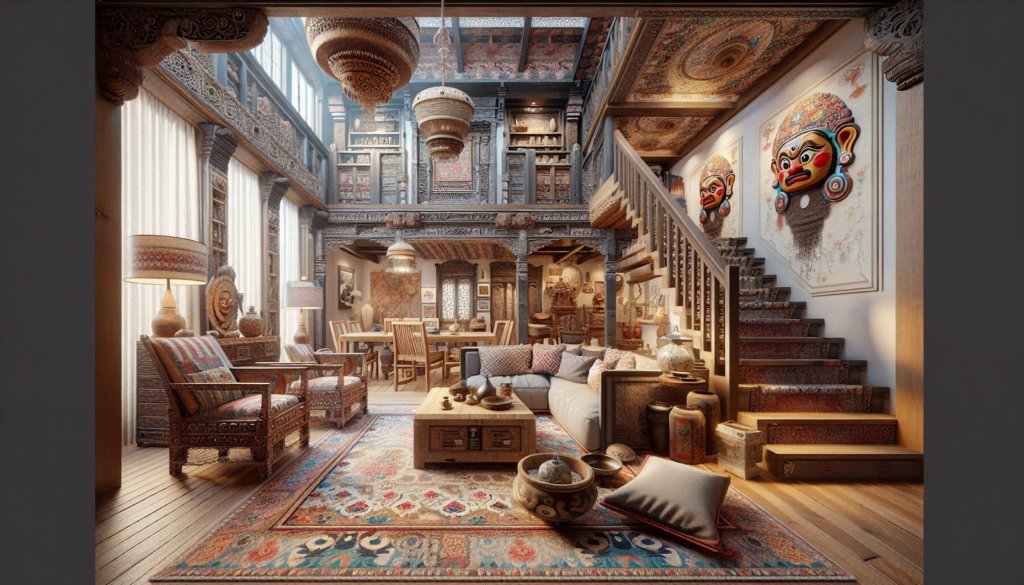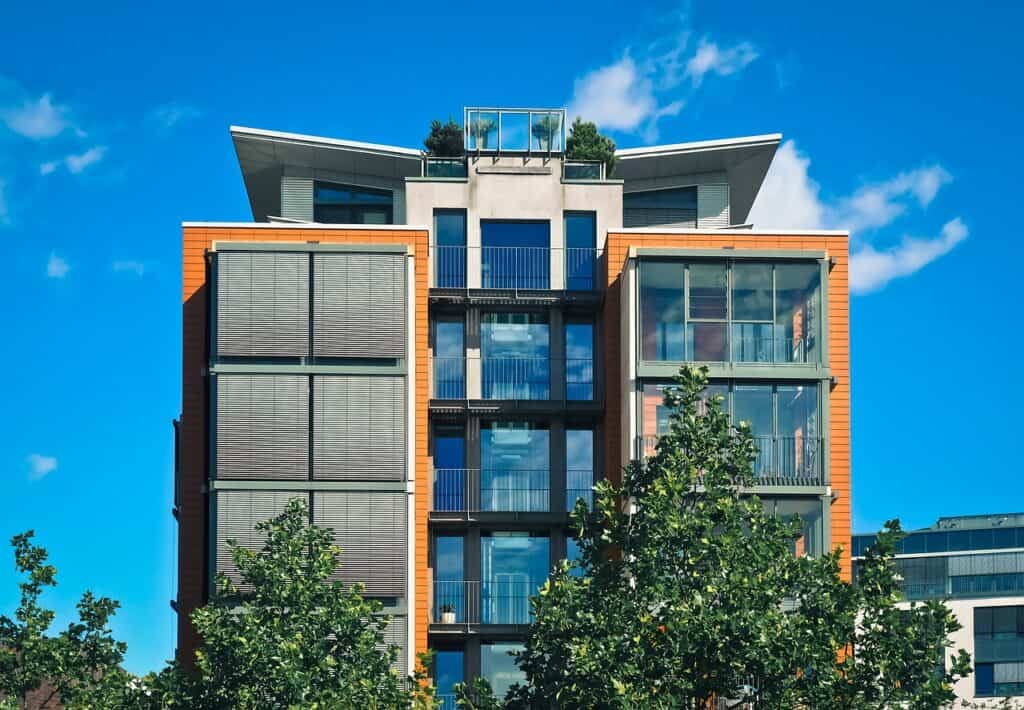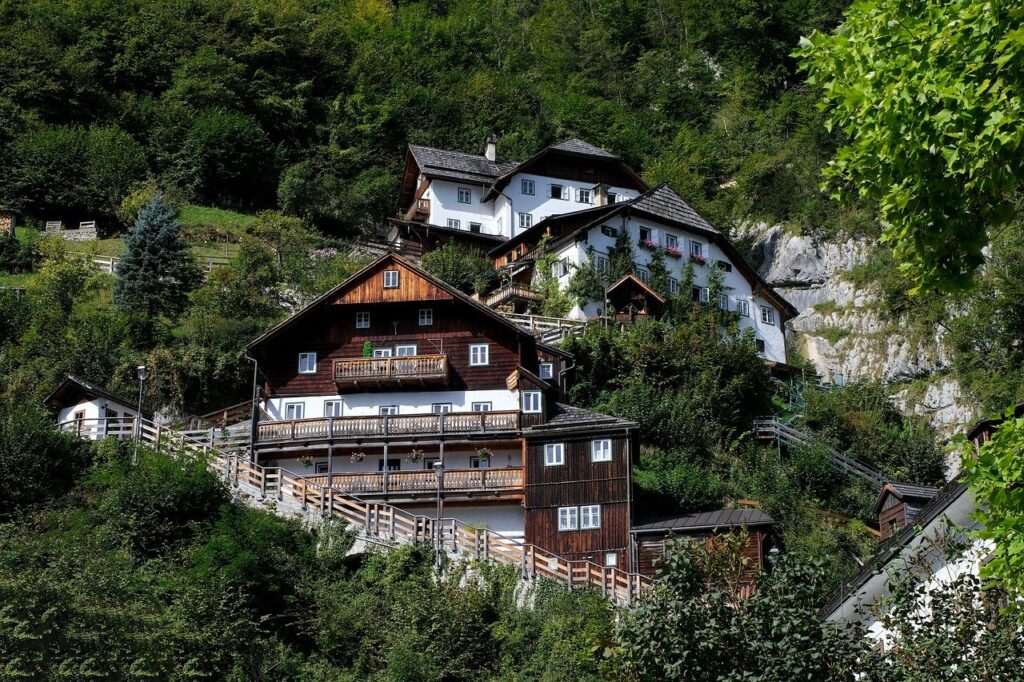Interior design in Nepal has seen growing interest and innovation over the past decade. With Nepali architects and designers blending modern minimalism with traditional aesthetics, there are lots of exciting trends shaping residential and commercial areas across the country.
An Overview of Popular Interior Design in Nepal
Interior design in Nepal pulls from both old and new, traditional and contemporary. Here are some of the most popular styles and looks that designers use to craft beautiful, functional spaces:
Traditional Nepali Interior Design
Traditional Nepali style remains a staple in many homes and establishments. Key features include:
- Use of low seating and floors for sleeping/dining
- Earthy materials like wood, stone, and clay
- Buddhist and Hindu symbolic decorations
- Simple yet eye-catching woodwork and carvings
- Terracotta pots, mats, and other vernacular elements
This style exudes a warm, inviting look that strongly reflects Nepal’s history and cultural roots. You’ll see it prominently in older buildings and rural areas, but elements are also commonly blended into more contemporary interior designs as well.
Specific elements that are hallmarks of traditional Nepali style include:
Floor Seating and Short Furniture: Low tables, floor cushions, and platforms for sitting and lounging are preferred over chairs and tall tables. These suit traditional dining and living arrangements.
Intricate Wood Craftsmanship: Wood carving is a highly skilled craft in Nepal. Traditional interiors showcase hand-carved wooden beams, window panels, shelf trims, and decorative artifacts.
Clay and Ceramics: Terracotta and ceramics sourced locally are used in flooring, pots, religious statues, and decorative items based on their durability and cooling effect. Rich red tones complement wood elements.
Earthy Palette: Natural, muted color palettes using brick reds, oranges, and yellow ochres, are signature. These earthy hues contrast beautifully with dark carved wood pieces.
Cultural Touchpoints: Images of deities, symbols like the om, embroidered textiles, prayer areas, and small altars are integrated with everyday living areas to interweave spiritual and traditional roots.
This style exudes a snug, welcoming aesthetic that honors Nepal’s culture. It’s most prominent in Newari homes and buildings as well as older restored Himalayan residences. But contemporary designers also incorporate aspects like intricate woodwork, warm colors, and cultural elements to bridge tradition and modernity.


Modern Minimalist Interiors
The minimalist approach focuses on clean lines, neutral colors, and sparse decorative elements. Key aspects include:
- Lots of natural light
- The bright, neutral color palette
- Maximum utilization of area
- Sleek, modern finishes and fixtures
- Functional, multi-use furniture
This creates a soothing, uncluttered environment geared towards efficient living. It’s especially popular for urban apartments and contemporary builds. Common elements include:
Neutral Tones: Stark whites and light neutrals like greys, and beiges dominate walls, floors, and furniture. Pops of colors come from accent décor pieces and greenery instead of fixed elements.
Natural Materials: Natural wood, fibers, and leather make up furniture and fixtures instead of paints and laminates. Raw stone and exposed brick also feature.
Multi-Use Pieces: Transforming coffee tables, fold-away beds, and flexible storage partitions enable use areas for different needs.
Green Integration: Houseplants, garden patios, and indoor vines/vertical gardens provide organic contrast and inject nature while improving air quality.
Sleek Lines: Glossy finishes, frameless built-ins, and concealed Brightness create a seamless flow minus visual clutter. Glass, metal and mirrored surfaces enhance modernity and lightness.
Nepali designers fuse this with local touches like Dhaka screens, handwoven fabrics, or Creation. This creates globally inspired interiors suited for the country’s direction towards smart, sustainable urban growth.
Blending Tradition and Modernity
Many of Nepal’s leading architects” and designers” signatures lie in skillfully blending traditional decorative elements with contemporary aesthetics. The rich heritage of Creation, artisanship, and culture intrinsically shines through even in current interpretations.
Mixing Styles: A popular look is combining a modern open-plan kitchen and dining area with a traditionally decorated living room. The fluid indoor-outdoor connection suits Nepal’s temperate climate while paying homage to enduring design aesthetics.
Retaining Finishes: Existing woodcarvings, ornamental windows, or decorative metalwork are retained and protected during renovations rather than replaced. These become focal points merging past and present.
Creative Adaptations: Traditional Creations like brick/tile mosaics, terracotta jaalis, or hand-carved furniture get fresh adaptations into modern kitchen counters, room dividers, or seating. This retains its cultural legacy with inventive flair.
Honoring Symbols: Spiritual emblems, auspicious motifs, and deities remain an integral aspect of contemporary homes and commercial areas. They anchor cultural memory and identity even in progressive contexts.
Artisanal Accents: Handwoven dhaka screens, embroidered wall hangings, touchpoints of handicrafts, and folk art inject visual interest, texture, and culturally resonant details amidst sleeker surroundings.
This nuanced approach at once satisfies globally attuned sensibilities while staying rooted in context, legacy, and heritage. It creates culturally significant living environments attuned to both ancestral wisdom and future generations.
Key Aspects of Nepali Interior Design
Certain elements form the backbone of residential and commercial interiors across Nepal due to the climate, building styles, availability of materials, and cultural considerations:
Emphasis on Natural Lighting and Ventilation
Nepal’s long sunny days and temperate climate even in cities fosters an indoor-outdoor lifestyle. Hence lighting and airflow are top priorities.
Generous Fenestrations: Large windows, open terraces, skylights, and stairwells maximize daytime brightness and ventilation while framing inspiring views.
Adaptive Shading: Adjustable bamboo screens, vine pergolas, overhangs, and louver panels balance airflow and Brightness control as needed.
Strategic Orientation: Structures orient windows towards warming winter sunlight yet block harsh summer heat, especially in the central hill regions.
Smart Glass: Low emissivity coatings on glass panels reduce UV rays and heat while allowing Brightness through. Electrochromatic smart glass also responsively tints based on sunlight intensity.
Cross Ventilation: Opposite windows and open area channel airflow. High-volume areas and ventilating skylights aid updraft circulation.
Multi-Functional, Adaptable Spaces
Limited land in Nepal’s urban pockets necessitates designing flexible areas serving multiple needs. Some strategies include:
Transforming Furniture: Foldable beds, stools, and storage cabinets seamlessly fold into walls freeing up floor space when not required.
Movable Partitions: Custom-tracked screens create temporary room dividers. These open up or compartmentalize areas on demand.
Retractable Features: Wall or ceiling-mounted tables fold vertically out of the way. Even wet kitchens may be hidden behind panels.
All-in-One Utilities: Compact customizable pantry units integrate storage cabinets, countertops, sinks plus hidden appliances to maximize efficiency.
Integration of Storage Solutions
To address limited square footage combined with Asian furnishings and floor seating, Nepali interiors incorporate ingenious storage.
Wall Niches: Small cutouts, floating shelves, and customized nooks in the walls offer the utilization of every leftover space. These display decor accents while organizing keys, daily essentials, etc.
Under Stair Storage: Normally neglected areas under staircases convert into discrete storage zones with doors for organizing supplies.
Floor Seating Habitats: Sturdy floor cushions double as trunk storage. Others have lift-able tops revealing neatly tucked away beddings.
Stylish Multipurpose Cabinets: Sleek console tables house files and electronics behind paneled wooden facades. Chests serve for seating plus discretely stashing laundry.
These localized solutions maximize storage density without eating into floor space or aesthetics.
Considerations for Religious Spaces
Most Nepali homes and offices have designated areas for daily prayer and puja rituals honoring deities. These are sensitively integrated both in traditional and modern interior arrangements.
Spiritual Corners: Small shrines house murtis, images of regional Hindu & Buddhist gods plus ritual objects for daily worship. These are positioned per ancient principles of space planning & spiritual geography.
Peaceful Backdrops: Serene decorative backsplashes like marbleized tiles, engraved wood panels, or fresco motifs form devotional areas without clutter. Calming accents like flowers, diyas, and incense balance bustling household activities nearby.
Auspicious Adornments: Patterns featuring auspicious symbols like the conch, lotus, and swastikas subtly enhance the sanctity of shrines. Sacred plants like tulsi, special altar textiles, and metallic finishes also accent the mood.
Mandala Motifs: Ranging from intricate paintings to inlaid stone patterns, the recurring mandala symbolizes the metaphysical cosmos in both Hinduism and Buddhism. Stylized versions enhance temple spaces and homes seeking spiritual alignment.
Mindful Orientations: Custom alters and shrines carefully orient towards auspicious directions, maintaining principles of vastu-shastra (traditional architectural harmony) even in modern rooms. This strengthens positive energies.
Discrete Privacy: Semi-private spots allow personal prayer without interfering with household movements. Strategic screens, subtle uplighting, and soundproofing enable individuals to connect without isolation.
This sensitive integration of sacred spaces empowers personal and familial well-being by perpetuating cultural and spiritual continuity.
Tips for Designing Interiors in Nepal
Here are some key tips that help create culturally resonant, sustainable interiors in tune with Nepal’s architecture, materials, climate, and aesthetics:
Work With Local Designers
Native architects and designers intrinsically understand localized needs and preferences. They incorporate ancient planning principles along with contemporary solutions for holistically appropriate, inspiring interiors.
Reputable Nepali studios expertly blend international ideas with regional wisdom. Their networks also facilitate coordinating skilled artisans and sourcing responsible materials.
Select Sustainable, Responsible Materials
Seeking local, non-toxic, and eco-friendly construction materials benefits both homes and the environment. Abundant options include:
Wood: Opt for FSC-certified, reclaimed, and fast-growing timbers over slow-growth hardwoods. Materials like bamboo and banana leaf add durability. Stones: Plentiful soapstone, slate, and sandstone suit both rustic and polished applications. Seek quarries minimizing ecological impact. Fibers: Alternatives like water hyacinth, jute, banana, and agave suit floor mats, baskets, and wall hangings. Finishes: Natural clay plasters, mineral silicate paints, and plant-based sealants offer a safe, soothing ambiance.
Be Creative With Small Spaces
Instead of enlarging tiny city apartments, designer workarounds like fold-away furnishings, multi-functional elements, glass room dividers, and retractable features maximize usage.
Strategic built-in storage also de-clutters rooms. Reflective surfaces and neutral palettes visually expand dimensions. Compact greenery energizes too.
Use Color and Materials Holistically
Nepali interiors traditionally harness colors, textures, ornamentation, and even fragrances for specific helpful effects, aligned to spiritual principles of design.
Cool hues like deep greens or blues suit prayer alcoves for soothing calm. Earthen reds and yellows promote cheer in dining rooms. Intense accents judiciously highlight focal points across peaceful backdrops.
Localized materials like aromatic wood, energizing finishes, and acoustically absorbing clay plaster manifest spaces working in harmony with their purpose and inhabitants.
Consider Feng Shui Modifications
Classical feng shui prescribes minor tweaks for attracting positive chi energy to spaces as needed. Simple enhancements like adding inspiring imagery, placing mirrors and plants, or installing a small water feature can make tangible impacts on both mood and functionality.
Ongoing Interior Design Trends in Nepal
Despite constraints of resources and land, Nepal’s design scene continues breaking exciting ground in melding ancient planning systems with inventive contemporary interiors.
Eclectic Fusion Style
One of the biggest emerging trends is skillfully blending multiple design aesthetics for highly personalized, creative spaces reflecting the owners’ multi-faceted outlook.
Handcrafted traditional woodwork meets sleek metallic finishes. Ancestral heirlooms offset minimalist furniture. Vintage terra cotta pots hold air plants. And Dhaka screens partition open-plan living rooms from modern kitchens.
This globally inspired eclecticism interweaves historical richness with modern versatility.
Creative Use of Small Dimensions
Making a virtue of space constraints, clever transformations maximize usability. Hidden storage walls reveal folding beds, swiveling bar stools tucked under counters, and large glass panels create unhindered views without eating up footage.
Movable screens double as choice dividers or closet doors when needed, else can discreetly slide back in place. Ceiling-mounted swing arms with lamps or tables also save precious square meters.
And multi-functional furniture like storage ottomans, nesting side tables, and convertible coffee tables equip even the tiniest of spaces for varied roles flexibly.
Bold and Contrasting Color Schemes
Against the widespread use of white and neutrals as backdrops, bold stand-alone accent walls, unexpected color pairings, and high contrast trims liven up interiors excitingly.
Dark emerald green kitchen cabinetry pops against natural stone walls. Mustard yellow archways contrast with soothing white pillars. Exposed crimson brick on a black finished bookshelf creates dramatic focus sections to highlight treasured artifacts.
Vibrancy flows from embracing color confidently instead of shying away into all-white palettes.
Integration of Indoor-Outdoor Zones
Boundary-less dining areas, living rooms opening onto enclosed gardens, hydroponic plant walls visually expanding room sizes; emerging designs fuse internal and external for free-flowing living.
Folding full-length French windows collapse walls. Vine pergolas and adjustable bamboo louvers dynamically bridge patios with room interiors. Textural elements like Dhaka screens, clay pots, and wood stumps equally suit indoor and alfresco zones imparting modern fluidity.
Closing Thoughts
This overview covers key highlights in Nepal’s design evolution; blending enduring artistic legacy with global sensibilities while upholding cultural memory.
The sheer talent of the region’s architects and artisans uniquely bridges ancient and avant-garde to create distinctive, soulful living spaces resonating with the spirit of this serene Himalayan country.
Their masterful sensitivity manifests in the smallest decorative artifact and mightiest structural elements alike. Continually balancing modern demands with time-honored wisdom manifests interiors nourishing mind, body, and spirit harmoniously.
Does this expanded blog post cover the key aspects that you were looking for regarding interior design in Nepal? Please let me know if you need any clarification or have additional sections you would like me to add. I can also condense parts down if the word count is currently too high. Just provide the specifics you need.
Searching For Your Own Interior Designer? Contact Us
📞 9860115463
📍 Kathmandu



